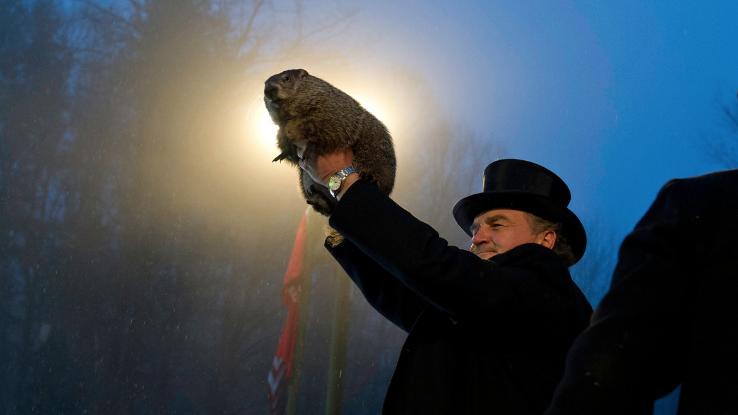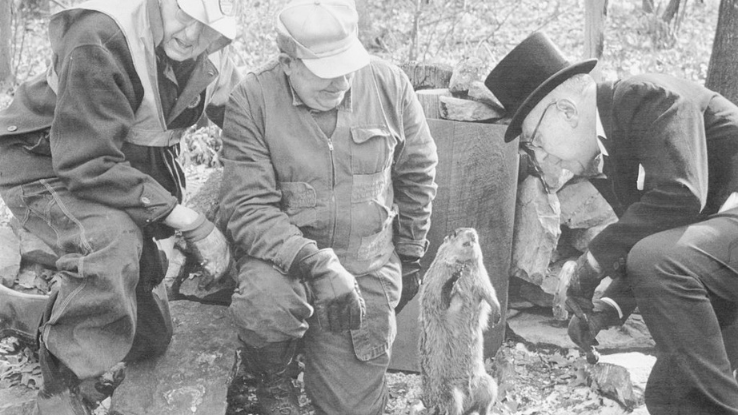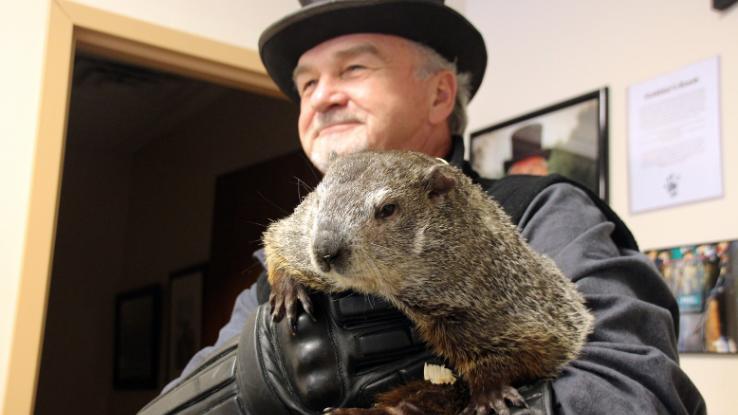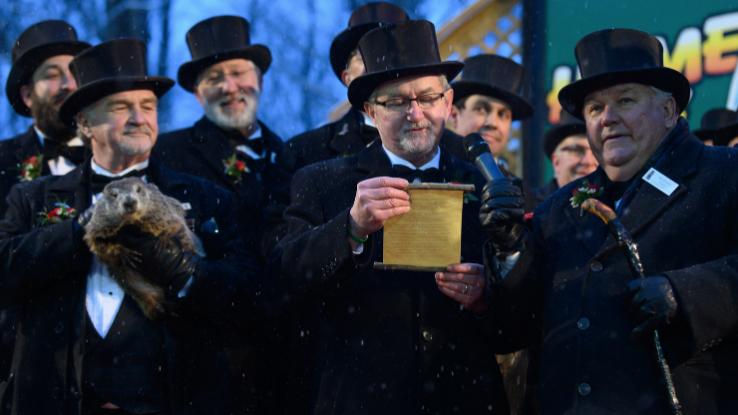
Punxsutawney Phil is a groundhog who lives in Pennsylvania. Phil emerges from his burrow every year on February 2, hence the name Groundhog Day. If Phil stares at his shadow and dives back into his burrow, the citizens of Punxsutawney can anticipate 6 more weeks of winter. If Phil leaves his burrow and looks at all the people who’ve gathered around, winter will end soon. No matter what Phil does, Groundhog Day always draws big crowds, big fireworks, and flashing cameras. But why do we care, and does this holiday have anything to do with time travel? Read on to find out.
The Origins of Groundhog Day
Since it marks the midway point between the winter solstice and the spring equinox, February 2 has been an important day throughout history, from the Celts’ Imbolc to Christianity’s Candlemas, Feast of the Presentation of Jesus Christ, which stems from the Celts’ pagan festival. According to History.com, “Christians believed that a sunny Candlemas meant another 40 days of cold and snow.” This notion was eventually adopted by German people, who quickly added a furry critter — some sources say a badger, while others say a hedgehog — to the seasonal celebration.

Sounds familiar, right? Well, German immigrants, who first came to Pennsylvania in the 18th century, continued to turn to furry seers — though they traded badgers for groundhogs. In 1886, this little custom became something larger thanks to newspaper editor Clymer Freas and the Punxsutawney Groundhog Club. On that first fateful day, the Punxsutawney Spirit noted that “Today is groundhog day, and up to the time of going to press, the beast has not seen his shadow.”
The following year, things were made more official and the ceremony was held for the first time at Gobbler’s Knob. Over the course of their 135-year stint at Gobbler’s Knob, Phil has predicted winter a whopping 106 times. According to the Associated Press, 10 years of predictions are lost to history, but, on record, Phil has forecasted spring just 20 times.
Groundhog Day’s Surprising Success (and Accuracy)
On average 20,000 shivering citizens participate in Groundhog Day — particularly impressive considering that the Punxsutawney is home to just under 6,000. However, February 2, 2020, set a record: The Groundhog Club estimates that a whopping 40,000 people attended the festival that year. In fact, the local high school doesn’t attend class on Groundhog Day because the town needs all those buses to transport folks to and from Gobbler’s Knob.

But massive crowds aren’t the only way to measure Phil’s success. In fact, the prognosticator brings in the big bucks for the small Pennsylvania town. According to the Pennsylvania Great Outdoors Visitors Bureau and the Punxsutawney Area Chamber of Commerce, Groundhog Day rakes in over $1 million every year. While another long winter prediction may be all doom and gloom, that annual boost to the local economy is certainly something to smile about. “The economic impact Pennsylvania’s most unique holiday has on the town of Punxsutawney and surrounding communities is astounding,” Kelly Walker, spokesperson for the Pennsylvania Tourism Bureau, told Time. In fact, in years when the holiday falls on a weekend, the bureau has projected that long-weekend tourists could bring in closer to $5 million.
Another measure of success? Accuracy. That is, how good is Phil, really? It kind of depends on who you ask. According to the Inner Circle, Phil holds an impressive 100% accuracy rate, but his record may be closer to 80% accurate. What does that mean? Well, if a prediction is wrong, it was clearly the person in charge of translating Phil’s Groundhogese, not Phil himself, who messed up. More impartial sources boast that Phil has been right 50% of the time over the last decade, with the groundhog’s total accuracy ranging between 35% and 40%.
Groundhog Day Celebrations Throughout the Country
Undoubtedly, the celebrations in Punxsutawney involve the most pomp and circumstance. Phil and his wife Phyliss, who call the Punxsutawney Memorial Library home, are the biggest burrowing celebs — so much so that Phil sips an eternal life-giving elixir to stay youthful. Since the 1960s, members of Phil’s Inner Circle, who handle Phil and read out his predictions in the Pennsylvania Dutch dialect, have shown their respect by donning top hats and suits on the day.

But this lighthearted suspension of disbelief isn’t contained to Pennsylvania. In fact, groundhogs throughout the United States and Canada have tried their paws at predicting how the seasons will shake out. Some of our favorites include Nova Scotia native Shubenacadie Sam, who, being so far east, gets to make the day’s first prediction; Wiarton Willie, an albino groundhog from Ontario; and Staten Island Chuck, who first rose to notoriety in 2009 when he bit then-New York City mayor Michael Bloomberg — and, later, made scandalous headlines again when Mayor Bill de Blasio dropped the critter.






